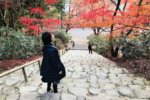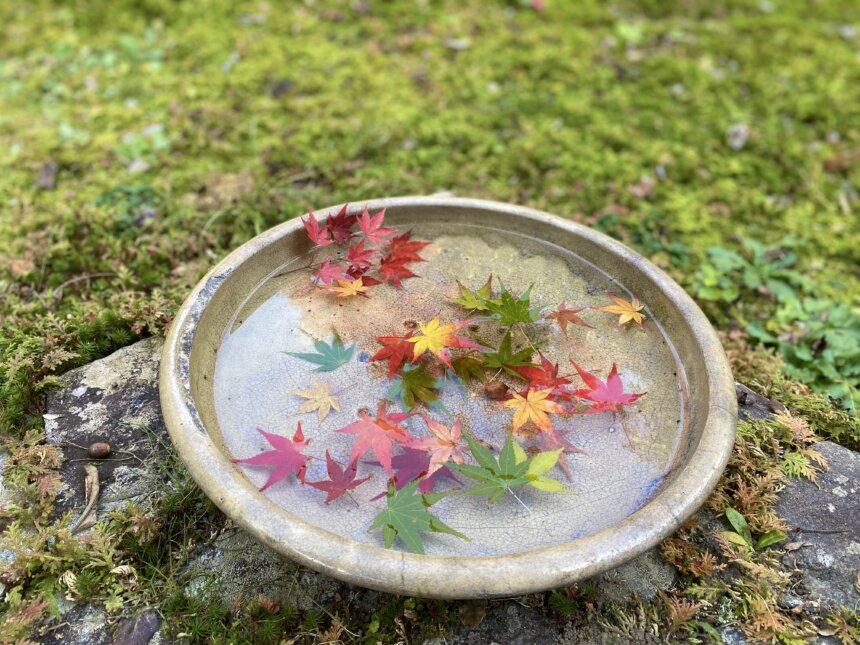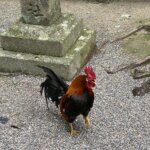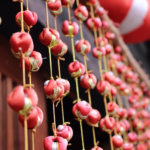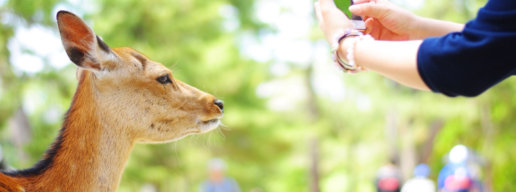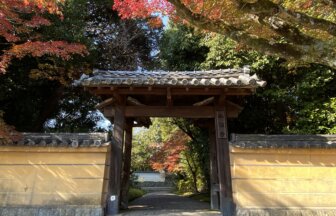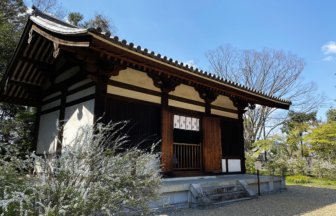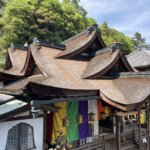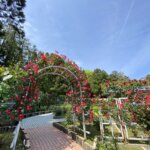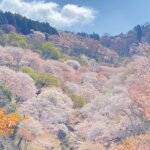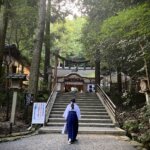Tucked away in the northern part of Nara City, Kombu-in is a beautiful convent which can be depicted as a jewelry box or a secret garden. The approach to the temple extends northwards from the ancient principal road that connects Todai-ji Temple straight to Heijo Palace. Although the gate is normally closed to the public, it opens for a few days in spring and autumn.
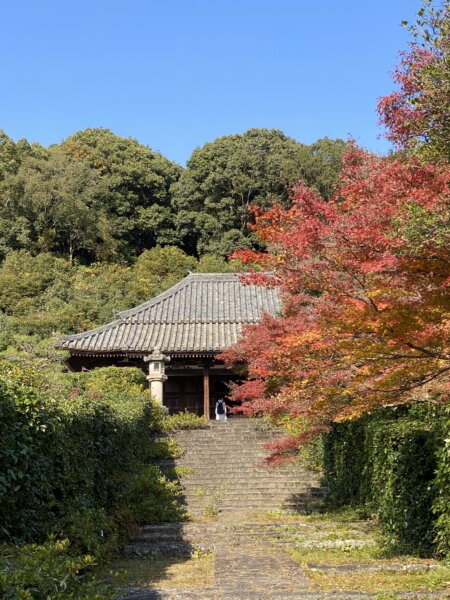
There is no reliable record of who founded the temple and when. After having experienced threat of extinction twice in its history, it was revived by the third shogun of the Tokugawa dynasty, Iemitsu (1604-1651), and moved to the current precincts which was donated by the fourth shogun, Ietsuna (1641-1680). Since then, it has been under the generous patronage of the Tokugawa government until the end of the shogunate.
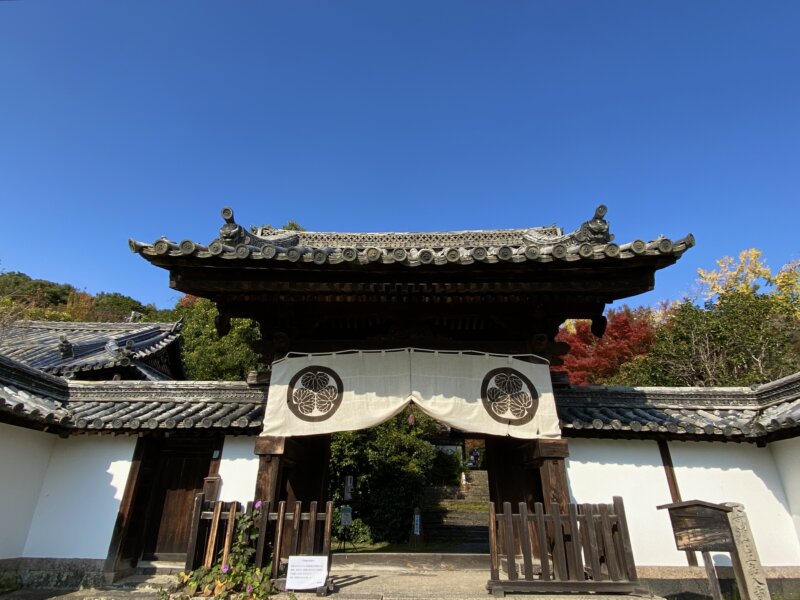
Front gate — Two crests on the curtain are the Tokugawa clan’s: a design consisting of a circle and three hollyhock leaves.
Reception Hall
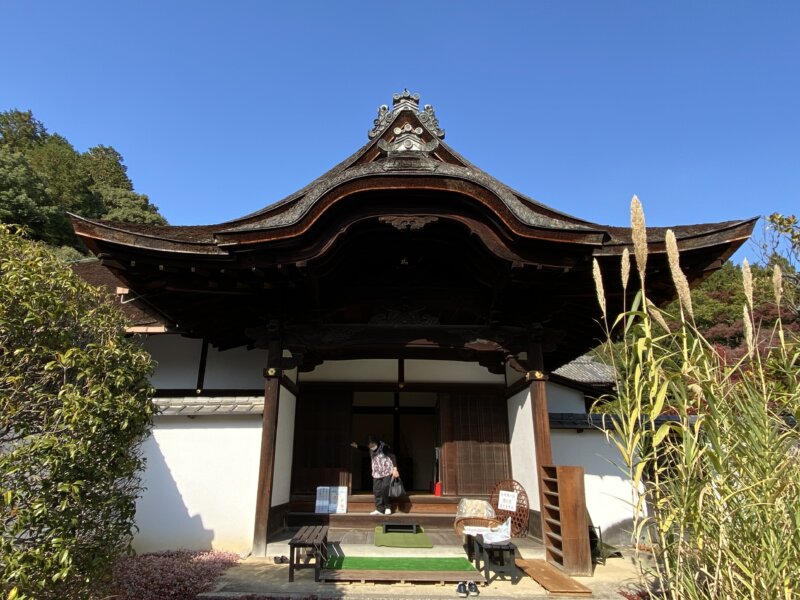
Go along the approach and through two gates and you will see the reception hall on your left. It is a modest-looking Japanese architecture but embracing dignified beauty and style. The rooms are elegantly decorated; drawings are on the walls and doors, furnishings show the tradition and authenticity of Japan, and, above all, natural flowers are arranged here and there during the special opening period, adding delicacy and colors to the scene. The building itself is an Important Cultural Property.

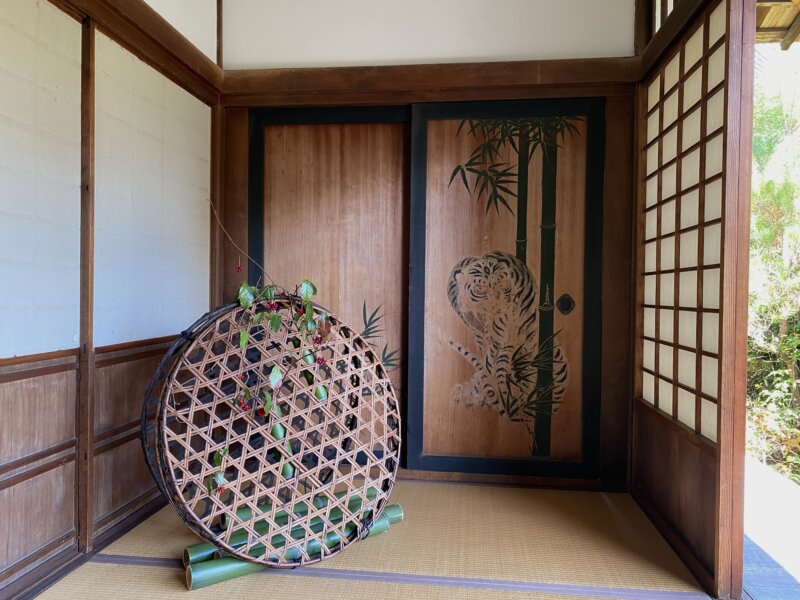
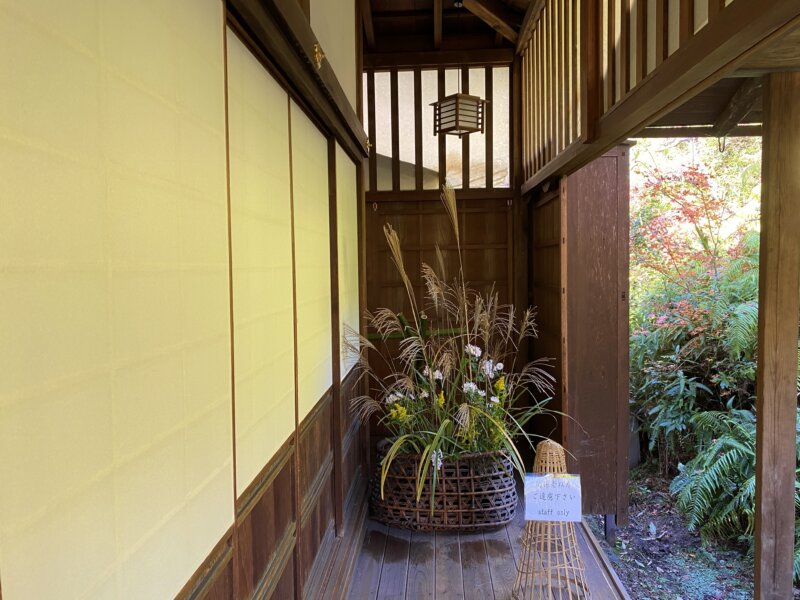
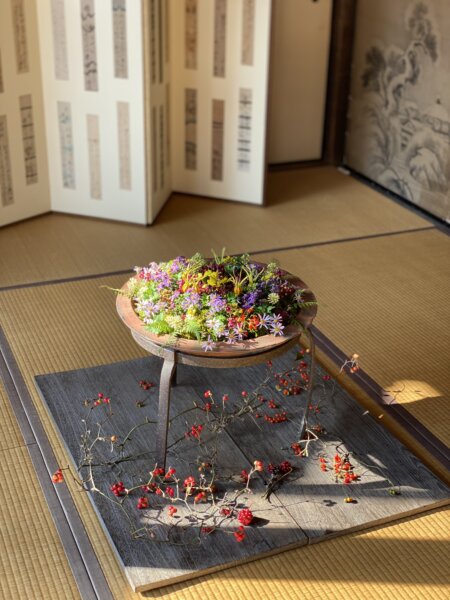
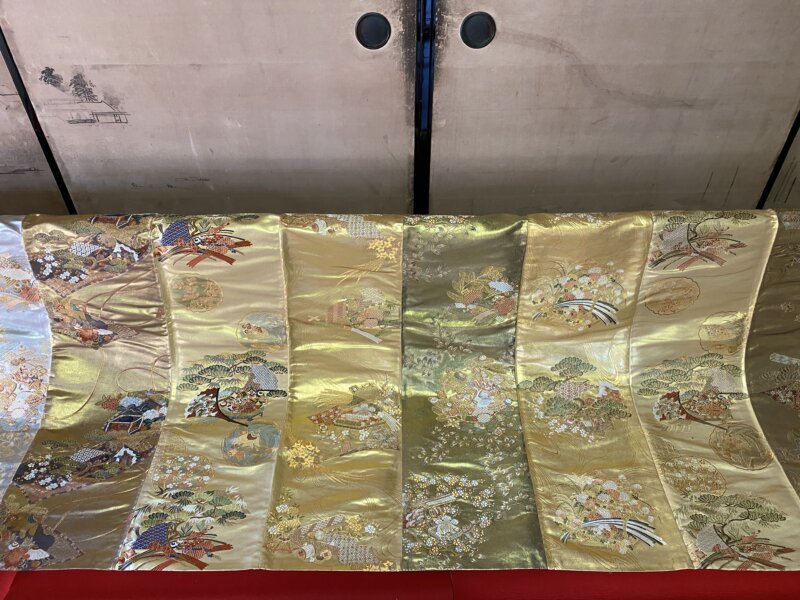
Uchishiki (altar frontal) — decorative piece of textile adorning an altar.
Long narrow pieces of delicately embroidered cloth are sewn together.
Otamaya Hall
In the middle of the roofed corridor stretching from the Reception Hall to the Main Hall, you will find a small open space on your left, from where you will see the Otamaya Hall through a small gate. The mortuary tablets of the Tokugawa family are enshrined there, which eloquently expresses the close relationship between the temple and Tokugawa.
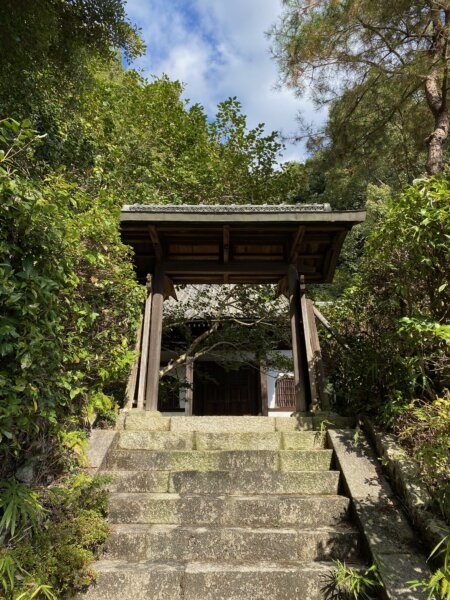
Main Hall
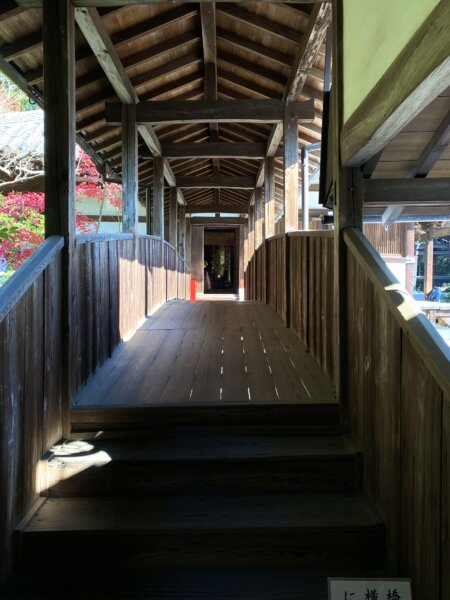
Proceed along the corridor and you will finally arrive at the Main Hall.
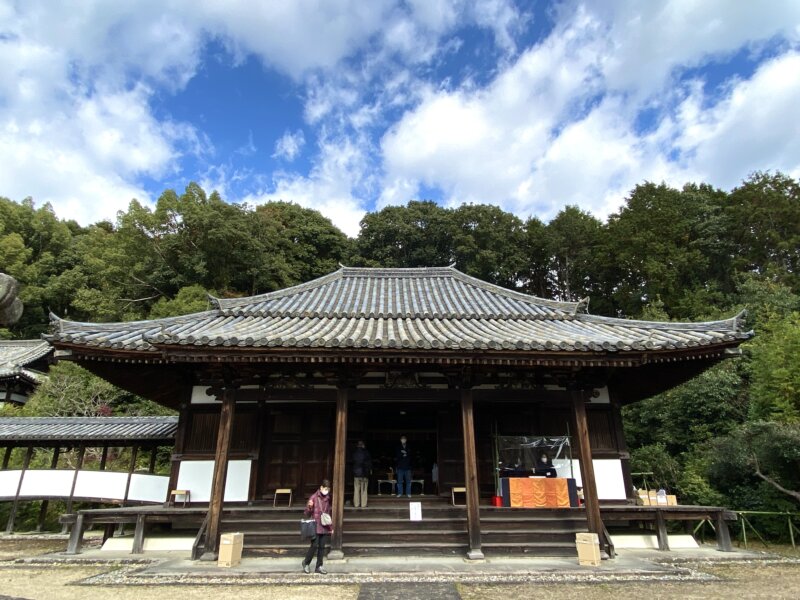
Inside the hall, you will find beautiful patterns and colors still remaining on the pillars and beams. Here, golden Amida Triad statues are enshrined on the platform. In the center is Amida Nyorai, which is said to have been created in the first half of the 8th century. He connects his thumb and ring finger to make a circle in front of his chest using both hands (one of the Buddhist hand gestures). On the right and left of Nyorai are two attendants; Kannon Bosatsu who embodies mercy and Shisei Bosatsu who represents wisdom.
Examples of Buddhist hand gestures (Japanese only)
http://jodoshuzensho.jp/daijiten/index.php/%E4%B9%9D%E5%93%81%E5%8D%B0
Information:
Address:
881, Horen-cho, Nara City, Nara 630-8113 Japan
In principle, the temple is open to visitors only during the predetermined short periods in spring and autumn.
For other days, the temple is not open to the public and you need to make a reservation if you want to make a visit. Reservation is not accepted in January, February, July, August and December.
For the latest information, refer to the official Nara Prefecture Tourism website below (Japanese only).
https://yamatoji.nara-kankou.or.jp/01shaji/02tera/01north_area/kombuin/
Admission for the special opening days:
Adult: 1000 yen
Access:
From bus stop No. 13 at Kintetsu Nara Station, take a bus for Yamato-Saidaiji Station or for Koku Jieitai (Air Self-Defense Force base). It takes about 5 minutes to the Saho Shogakko (elementary school) bus stop. Walk north for about 3 minutes.
Alternatively, it is a 20-minute walk from Kintetsu Nara Station.
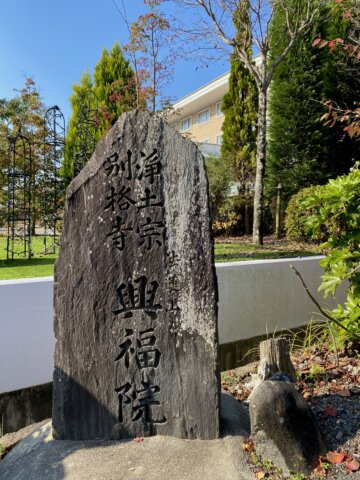
Last updated: January 11, 2023
Text by: Yumi